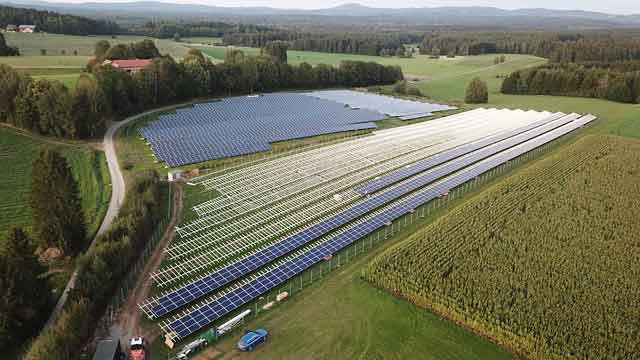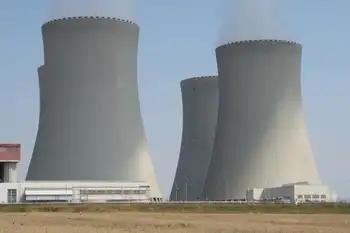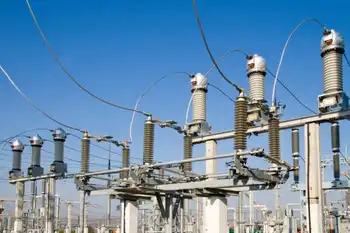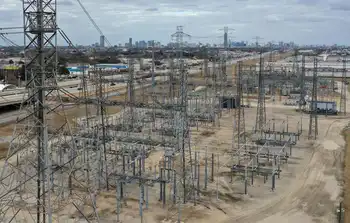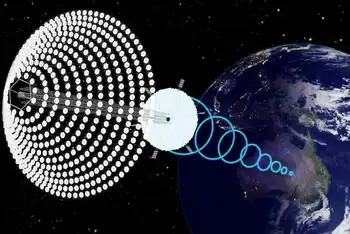Nuclear Energy Industry Maintains Near-Record Levels of Safety and Operating Performance
By PR Newswire
Arc Flash Training - CSA Z462 Electrical Safety
Our customized live online or in‑person group training can be delivered to your staff at your location.

- Live Online
- 6 hours Instructor-led
- Group Training Available
For the fourth time in the past five years, the U.S. nuclear energy industry's unit capability factor - a measure of efficiency - topped 90 percent. The 90.3 percent capability factor for 2005 was within one percentage point of the 91.2 percent record set in 2002 and matched in 2004. Unit capability factor is the percentage of maximum electricity a plant can supply to the electric grid, limited only by factors within the control of plant managers.
Excellent levels of efficiency at nuclear power plants, which supply electricity to one of every five U.S. homes and businesses, produced a near- record 783 billion kilowatt-hours (kwh) of electricity. This nearly equaled 2004's all-time record electricity output of 789 billion kwh, despite the fact that more than 40 percent of the nation's 103 nuclear reactors conducted scheduled refueling outages last spring, as compared to only 25 percent with refueling outages in spring 2004.
The nuclear energy industry similarly sustained near-record levels of safety and operating performance in areas including safety system performance, worker safety, unplanned automatic plant shutdowns, and programs to protect workers from radiation exposure.
"The stellar 2005 performance indicators exemplify the nuclear industry's ability to achieve excellence over a period of many years," said Frank L. "Skip" Bowman, the Nuclear Energy Institute's president and chief executive officer. "These performance measures clearly demonstrate that the United States continues to be a world leader in safe and secure nuclear plant performance."
The performance data compiled by WANO is analyzed by the Atlanta- based Institute of Nuclear Power Operations (INPO), which promotes excellence in U.S. nuclear power plant safety and operations. INPO uses the data to help set challenging benchmarks of excellence against which safety and plant operation can be measured. Other highlights of the nuclear energy industry's performance in 2005 include:
Unplanned Automatic Reactor Shutdowns: The median industry value was zero per plant for the second year in a row and the eighth time in the past nine years. In 2005, the industry experienced the fewest number of unplanned automatic shutdowns since WANO began collecting data. In 2003, the only year in this recent span when the median industry value was not zero (0.8 per plant), unplanned shutdowns at nine plants occurred during the Aug. 14 blackout that affected much of the Midwest and East Coast.
Safety System Performance: For the 11th straight year, 94 percent or more of key safety systems met industry goals for availability. The three key standby safety systems are two main cooling systems and back-up power supplies used to respond to unusual situations.
Last year, 96 percent of the key safety systems met their availability goals. Nuclear power plants are built with redundant safety systems and backup power supplies so these systems are available, if needed, even when maintenance is being performed on a similar system or component.
Unplanned Capability Loss: The 2005 median value of 1.6 matches the record set in 2001 and is below the 2005 industry goal of 2. Unplanned capability loss measures how much a plant is off line or unable to produce electricity due to power reductions, unplanned shutdowns or outage extensions. A low value reflects a plant's successful equipment performance and material condition programs.
Worker Safety: The nuclear industry is acknowledged as one of the safest working environments, and U.S. nuclear plants continue to post a very low industrial accident rate. In 2005, the industry had only 0.24 industrial accidents per 200,000 work-hours, a near-record low. This is better than the industry goal set for 2005. Statistics from other industries through 2004, as compiled by the Bureau of Labor Statistics, show that it is safer to work at a nuclear power plant than in the manufacturing sector and even many other sectors.
Collective radiation exposure: The WANO indicators showed that collective radiation measurements for plant employees remained well below federal safety standards, even though the industry's performance at pressurized-water reactors (PWRs) was slightly higher than 2004. This is due in large part to equipment upgrades that position these plants to have their licenses to operate extended for an additional 20 years. Boiling-water reactors underwent equipment upgrades as well and saw a small increase in collective exposure to workers in 2005 over the previous year.
To view charts of the WANO performance indicators for U.S. nuclear power plants, go to the Nuclear Data section of NEI's web site at http://www.nei.org.
The Nuclear Energy Institute is the nuclear energy industry's policy organization. This news release and additional information about nuclear energy are available on NEI's Internet site at http:/ /www.nei.org.
The Institute of Nuclear Power Operations is based in Atlanta and was established by the nuclear industry in 1979 to promote the highest levels of safety and reliability - to promote excellence - in commercial nuclear plant operations.
The World Association of Nuclear Operators was created in 1989 to consolidate the efforts of nuclear operators worldwide to enhance the safety and reliability of operating nuclear power plants.





